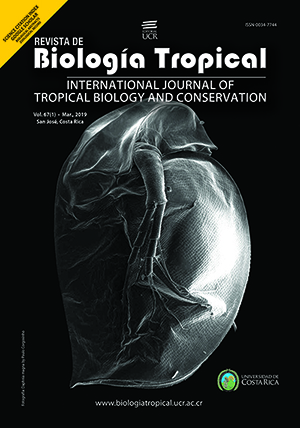Abstract
It is estimated that three quarters of earth´s surface is occupied by the oceans. This constitutes the habitat of a large number of species of flora and fauna. As part of the marine organisms, the most studied biochemical phylum are Porifera, Cnidaria and more recently Ascomycota, from which a large number of chemical compounds have been isolated and identified. These have shown different types of biological activities, mainly cytotoxic, bactericidal and antioxidant. In this research the marine sponge Iotrochota birotulata collected in Punta Bello-Córdoba in the Colombian Caribbean was studied, and its lipid profile from the analysis of the corresponding mass spectra of its constituent compounds was determined, 19 fatty acids were identified, which are reported for the first time for this specie, besides 10 sterols were identified. Fatty acids with carbon chains between C15 and C27 were found, showing a wide structural diversity, which is characteristic of the porifera phylum. The sterols showed structures mainly with nucleus Δ5 and Δ7, which are the most abundant in sponges. Moderate antioxidant activity was found in the stabilization of the radical cation ABTS+• and low activity in the stabilization of the radical DPPH•, the highest inhibition value was found in the aqueous extract with an IC50 de 43.9 µg/ml against the radical cation ABTS+•, showing that I. birotulata can produce compounds with moderate antioxidant activity. In the insecticidal activity test, larval affectation was found in methanolic and aqueous extracts at all concentrations and at all times of exposure evaluated against Spodoptera frugiperda, it was also determined that these extracts induce an antifeedant effect on the larvae as part of the mechanism insecticide. The optimal conditions and exposure times were determined for the best efficiency of the assay, which were 3 000 µg/ml and 48 h for the methanolic extract and 2 000 µg/ml and 24 h for the aqueous extract, respectively. In conclusion, the evaluated extracts of the I. birotulata showed moderate antioxidant activity and good and interesting insecticidal and antifeedant activities.
##plugins.facebook.comentarios##

This work is licensed under a Creative Commons Attribution 4.0 International License.
Copyright (c) 2019 Orlando José Pastrana Franco, Gilmar Gabriel Santafe Patiño, Emy Luz Sánchez Romero






